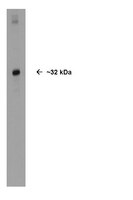A Comprehensive Profile of ChIP-Seq-Based Olig2 Target Genes in Motor Neuron Progenitor Cells Suggests the Possible Involvement of Olig2 in the Pathogenesis of Amyotrophic Lateral Sclerosis.
Satoh, J; Asahina, N; Kitano, S; Kino, Y
Journal of central nervous system disease
7
1-14
2015
Mostra il sommario
Amyotrophic lateral sclerosis (ALS) is an intractable neurodegenerative disease that primarily affects motor neurons in the cerebral cortex and the spinal cord. Recent evidence indicates that dysfunction of oligodendrocytes is implicated in the pathogenesis of ALS. The basic helix-loop-helix (bHLH) transcription factor Olig2 plays a pivotal role in the development of both motor neurons and oligodendrocytes in the progenitor of motor neuron (pMN) domain of the spinal cord, supporting evidence for the shared motor neuron/oligodendrocyte lineage. However, a comprehensive profile of Olig2 target genes in pMNs and oligodendrocyte progenitor cells (OPCs) with relevance to the pathogenesis of ALS remains to be characterized.By analyzing the ChIP-Seq datasets numbered SRP007566 and SRP015333 with the Strand NGS program, we identified genome-wide Olig2 target genes in pMNs and OPCs, followed by molecular network analysis using three distinct bioinformatics tools.We identified 5966 Olig2 target genes in pMNs, including Nkx2.2, Pax6, Irx3, Ngn2, Zep2 (Cip1), Trp3, Mnx1 (Hb9), and Cdkn1a, and 1553 genes in OPCs. The genes closely related to the keyword "alternative splicing" were enriched in the set of 740 targets overlapping between pMNs and OPCs. Furthermore, approximately one-third of downregulated genes in purified motor neurons of presymptomatic mutant SOD1 transgenic mice and in lumbar spinal cord tissues of ALS patients corresponded to Olig2 target genes in pMNs. Molecular networks of Olig2 target genes indicate that Olig2 regulates a wide range of genes essential for diverse neuronal and glial functions.These observations lead to a hypothesis that aberrant regulation of Olig2 function, by affecting biology of both motor neurons and oligodendrocytes, might be involved in the pathogenesis of ALS. | 26023283
 |
Tanycytes of the hypothalamic median eminence form a diet-responsive neurogenic niche.
Daniel A Lee,Joseph L Bedont,Thomas Pak,Hong Wang,Juan Song,Ana Miranda-Angulo,Vani Takiar,Vanessa Charubhumi,Francesca Balordi,Hirohide Takebayashi,Susan Aja,Eric Ford,Gordon Fishell,Seth Blackshaw
Nature neuroscience
15
2011
Mostra il sommario
Adult hypothalamic neurogenesis has recently been reported, but the cell of origin and the function of these newborn neurons are unknown. Using genetic fate mapping, we found that median eminence tanycytes generate newborn neurons. Blocking this neurogenesis altered the weight and metabolic activity of adult mice. These findings reveal a previously unreported neurogenic niche in the mammalian hypothalamus with important implications for metabolism. | 22446882
 |
Safety aspects of longitudinal administration of IGF-I/IGFBP-3 complex in neonatal mice.
Gunnel Hellgren,Wei Han,Xiaoyang Wang,Chatarina Löfqvist,Henrik Hagberg,Carina Mallard,Ann Hellström
Growth hormone & IGF research : official journal of the Growth Hormone Research Society and the International IGF Research Society
21
2010
Mostra il sommario
Very preterm birth is associated with a high risk of morbidity. Infants born very preterm have low serum levels of insulin-like growth factor I (IGF-I), that further decrease after birth. IGF-I is essential for brain development and low serum levels have been associated with retinopathy of prematurity. The present study aimed to investigate the effects of prolonged administration of a low dose of rhIGF-I/rhIGFBP-3 on glucose levels and total body weight, as well as liver, spleen and brain weights, and gray and subcortical white matter in newborn mice. | 21696987
 |
Embryonic stem cell-based mapping of developmental transcriptional programs.
Mazzoni, EO; Mahony, S; Iacovino, M; Morrison, CA; Mountoufaris, G; Closser, M; Whyte, WA; Young, RA; Kyba, M; Gifford, DK; Wichterle, H
Nature methods
8
1056-8
2010
Mostra il sommario
The study of developmentally regulated transcription factors by chromatin immunoprecipitation and deep sequencing (ChIP-seq) faces two major obstacles: availability of ChIP-grade antibodies and access to sufficient number of cells. We describe versatile genome-wide analysis of transcription-factor binding sites by combining directed differentiation of embryonic stem cells and inducible expression of tagged proteins. We demonstrate its utility by mapping DNA-binding sites of transcription factors involved in motor neuron specification. | 22081127
 |












